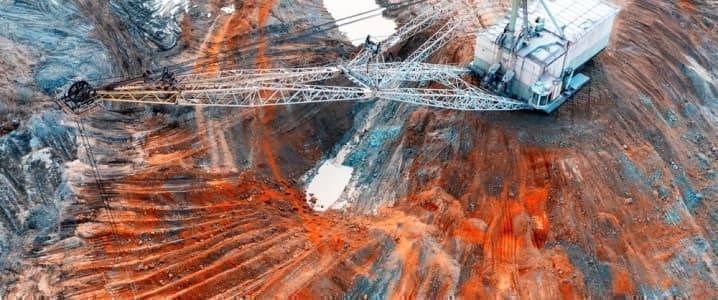Rare earth elements (REEs) are a group of17 metallic elements essential in many modern technologies. Despite their name, they are not actually rare, but they are difficult to extract and refine. In recent years, the importance of REEs has grown due to their role in energy production and storage and their impact on geopolitics.
What Are Rare Earth Elements?
The 17 rare earth elements include:
- Scandium
- Yttrium
- Lanthanum
- Cerium
- Praseodymium
- Neodymium
- Promethium
- Samarium
- Europium
- Gadolinium
- Terbium
- Dysprosium
- Holmium
- Erbium
- Thulium
- Ytterbium
- Lutetium

These elements are found in the Earth's crust but are typically dispersed and mixed with other minerals, making them difficult to extract. The most abundant REEs are cerium, lanthanum, neodymium, and yttrium.
Properties of Rare Earth Elements
Rare earth elements have several unique properties that make them essential for modern technologies. Some of these properties include:
High Magnetization
Several rare earth elements, such as neodymium and samarium, have high magnetization, making them ideal for magnets for hard disk drives, headphones or speakers.
Luminescence
Europium is one of the rare earth elements that exhibit luminescent properties. It is used in fluorescent lamps or television sets.
Catalytic Activity
Cerium is known for its catalytic activity, making it useful in catalytic car converters. It helps reduce harmful emissions from vehicles.
Common Uses of Rare Earth Elements
Rare earth elements have a wide range of applications due to their unique properties. Some common uses include:
Electronics
Many electronic devices rely on rare earth elements for their functionality. For example:
- Neodymium is used in magnets for hard disk drives, headphones, and speakers.
- Cerium is used in catalytic converters for cars.
- Europium is used in fluorescent lamps.
Energy Production and Storage
Rare earth elements are important in renewable energy technologies such as wind turbines and solar panels. For example:
- Neodymium is used in the generators of wind turbines.
- Dysprosium is used in the magnets of electric vehicles.
- Lanthanum is used in nickel-metal hydride batteries.
Defense Technology
Rare earth elements also have military applications such as:
- Samarium-cobalt magnets are used in precision-guided missiles.
- Gadolinium is used as a neutron absorber in nuclear reactors.
Where Do Rare Earth Elements Come From?
Most rare earth elements come from China, which produces over 80% of the world's supply. Other countries with significant reserves include Russia, Australia, Brazil, India, Malaysia, and the United States.
There has been growing concern about China's dominance over the supply chain for rare earth elements in recent years. This has led some countries to explore alternative sources or develop new technologies that reduce reliance on these materials.
ADVERTISEMENT
Impact on Geopolitics
The geopolitical implications associated with REEs stem from their critical role in the global economy and the concentration of production in China. Some key implications include:
- Dependence on China: The concentration of REE production in China has led to concerns about dependence on Chinese supply. This dependence has been highlighted by previous instances where China has restricted exports leading to price spikes and supply shortages.
- National Security Concerns: Using REEs in military equipment has raised national security concerns for countries that rely on Chinese supply. This has led to efforts by some countries to develop alternative sources or reduce reliance on REEs altogether.
- Resource Diplomacy: The importance of REEs has also led to resource diplomacy efforts by China aimed at securing access to resources globally. This includes investment in mining projects outside of China and strategic partnerships with countries such as Greenland.
- Environmental Concerns: The mining and processing of REEs can have significant environmental impacts, including water pollution and radioactive waste. Efforts to address these concerns have led to increased scrutiny of mining practices globally.
- Emerging Producers: There are several emerging producers outside of China, including Australia, Canada and the United States. These producers are focused on developing alternative sources through exploration or recycling.
- Recycling: Recycling is an important source of rare earth elements. Efforts are underway globally to increase recycling rates for electronic waste, which contains significant amounts of rare earth elements.
Future Outlook of Rare Earth Elements
Rare earth elements play a critical role in the global economy, with significant geopolitical implications associated with their production and supply chains. While current production is concentrated in China, emerging producers outside of China focus on developing alternative sources or reducing reliance altogether. Efforts towards diversification will continue alongside increasing demand driven by emerging technologies presenting investment opportunities across the value chain.
The future outlook for rare earth elements is characterized by:
- Increased Demand: Demand for rare earth elements is expected to grow due to their critical role in emerging technologies such as electric vehicles and renewable energy systems.
- Diversification: Efforts will continue towards diversifying supply chains away from dependence on China through exploration or recycling efforts.
- Investment Opportunities: The growth potential for rare earth elements presents investment opportunities across the value chain, including exploration companies, mining companies and downstream manufacturers.
Conclusion
Rare earth elements are critical in many modern technologies, including electronics, energy production and storage, and defense technology. While they are not actually rare, their extraction and refinement can be challenging due to their dispersion among other minerals. As demand for these materials grows due to their importance in renewable energy technologies and other applications, concerns about supply chain security will continue to shape global politics and economics.
By Michael Kern for Oilprice.com
More Top Reads From Oilprice.com:
- How Recycling Could Solve The Battery Metals Shortage
- These Countries Have The Lowest Inflation In The World
- Natural Gas: A Comprehensive Guide To The World's Most Crucial Fuel

















